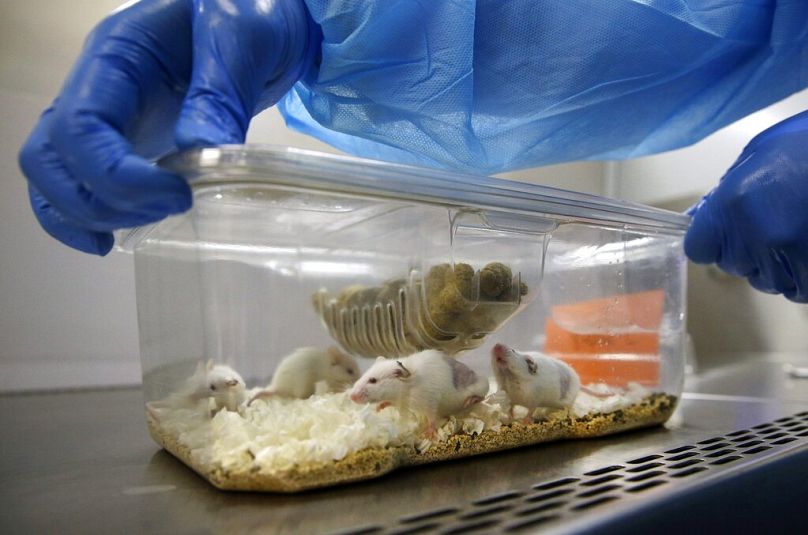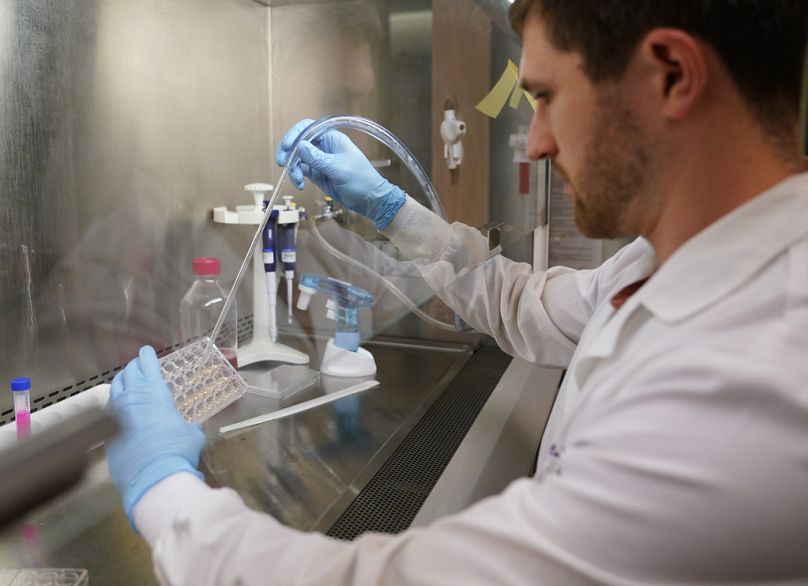Given the many shortcomings of modelling cancer in animals, it’s clear that we must stop pouring valuable funds down the drain. The priority must be to move away from using animals and focus instead on developing and implementing human-relevant methods, Dr Julia Baines writes.
As the nation reels from the shock of King Charles’ diagnosis — and millions of others across the UK go through their own battles with cancer — the pressure has never been higher for the government to step up its ambitious 10-Year Cancer Plan by moving away from ineffective and cruel experiments on animals.
In recent years, huge strides have been made in cancer care, including preventive measures like regular screening checks and encouraging more people to quit smoking and adopt plant-based diets.
However, cancer remains a leading cause of death globally, owing in large part to the staggering 96.6% failure rate in human clinical trials of cancer drugs that were tested on animals.
In crude attempts to understand how cancer develops and can be treated in humans, experimenters graft human tumour cells onto mice, inject them with chemicals, expose them to known cancer-causing agents, or genetically engineer them to have cancer-causing genes before killing them or leaving them to suffer and slowly die.
In 2022, nearly 100,000 procedures were conducted on mice, rats, frogs, gerbils, rabbits, and sheep for basic oncology experiments in Great Britain alone.
We know using animals to study human cancer is not working
The scientific community is aware that the use of animals, particularly mice, for studying cancer in humans is problematic.
Following an analysis of 1,110 xenograft models in which tumour cells were grafted onto mice, scientists and physicians from Harvard University, Massachusetts Institute of Technology, the Dana-Farber Cancer Institute, and other respected institutions reached a conclusion that fundamentally challenged the viability of grafting human tissue onto another species in an attempt to predict how patients would respond to therapy: transplanting human cancer cells into mice altered the genetic composition of the cells in ways that would be unlikely to occur in humans.
In turn, this altered the cell response to chemotherapy drugs. Essentially, when human tumour cells are transplanted into mice, they develop characteristics of mice cells — which are not relevant to human biology.
Experimenters genetically modify mice by activating cancer-causing genes or inactivating tumour-suppressing genes.
However, they often can’t control the level and pattern of the gene expression or inactivation, thus failing to mimic the sporadic and multistep characteristics of natural tumour growth.
In addition, these approaches are time-consuming and costly, use large numbers of animals, and can result in unexpected outcomes that are not relevant to the treatment of human patients.
Even former US National Cancer Institute Director Dr Richard Klausner expressed the need to call time on animal experiments, stating, “The history of cancer research has been a history of curing cancer in the mouse. We have cured mice of cancer for decades — and it simply didn’t work in humans.”
There are other, human-relevant methods out there
Given the many shortcomings of modelling cancer in animals — including the astonishingly low rate of translation from results in animal tests to human clinical trials and the pain and suffering experienced by the living, feeling beings used — it’s clear that we must stop pouring valuable funds down the drain.
The priority must be to move away from using animals and focus instead on developing and implementing human-relevant methods.
An array of superior human-based, non-animal methods already exists for developing immunotherapies, including for studying cancer initiation and development, exploring anti-cancer therapies, examining the role of the immune system in cancer physiology, and determining molecular features that can represent biomarkers in the development of specific cancers.
Models of human vascular tumours can now be created using three-dimensional bio-printing (like 3D printing using cells) to mimic key steps of malignant cancer growth.
Tumour-on-a-chip models — a technology where human tumour cells are grown in a state-of-the-art system to mimic the structure and function of tumour cells when grown in human tissue — are being used to study how immune and cancer cells interact with each other.
These models can even be personalised with patients’ own cells and used to test drugs, and the cellular response can be observed in real-time.
Cutting-edge tools can help us truly win the war on cancer
Innovative scientists have improved our understanding of the uniquely human aspects of cancer through genomics (the study of genes and their interactions with each other) and using organoid technology (three-dimensional miniaturised organs) to create human mammary tumour organoids and conduct sophisticated analyses of breast cancer cell lines.
Scientists and computer programmers are using artificial intelligence to generate profiles of cancer cells to identify characteristics that are meaningful for drug discovery and may predict drug responses in individual patients, allowing for faster diagnosis.
Wearable bionic chips have been developed to collect real-time data from patients and detect minuscule changes within the body to aid in the detection and diagnosis of different cancers.
Governments across Europe must ensure that funds are directed away from harmful animal experiments and towards cutting-edge tools based on human biology that show far greater promise in identifying cancer-causing compounds and generating treatments and cures for humans.
Only then can we truly win the war on cancer.
Dr Julia Baines is senior science policy manager at People for the Ethical Treatment of Animals (PETA).
At Euronews, we believe all views matter. Contact us at view@euronews.com to send pitches or submissions and be part of the conversation.













